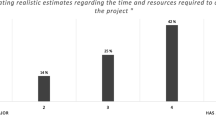Abstract
The OSSAD Methodology aims at providing a means for conducting office support systems analysis and design projects. The Methodology includes: data collection instruments and procedures, means to model both organizational and technical support systems, methods to analyze the present situation and proposed alternatives, ways of generating such alternatives, the conversion of a chosen alternative to technical and organizational specifications, issues of implementation and how they can be handled, and the conduct of periodic post implementation “audits” to ensure that the system is accomplishing its objectives. The approach chosen for the development of the Methodology included five applications. While the Methodology is already exploited and sold more elaborated data collection instruments and software tools (based on OSSAD’s modeling techniques) would represent an essential improvement of the Methodology and its market potential.
Further contact persons: G. de Petra, IPACRI, Via a Rava 124, I-00142 Roma - V. De Antonellis, Universita di Milano, Dip. di Scienze Dell’ Informazione, Via Moretto da Brescia 9, I-20133 Milano
Access this chapter
Tax calculation will be finalised at checkout
Purchases are for personal use only
Preview
Unable to display preview. Download preview PDF.
Similar content being viewed by others
References
Conrath, D.W. and Dumas, Ph. (eds.) “Office Support System Analysis and Design, a Manual”, Institut fur Organisationsforschung und Technologieanwendung (IOT), Miinchen, 1989.
Wolfram, G. and Pulst, E. “The FAOR - TODOS intersection - methodology and tools for analysis and design of office information systems,” in ESPRIT ’88, Part 2, the Commission of the European Communities (eds.), North-Holland, Amsterdam, 1988,1120–1139.
Rames J.R., Rolland, C. and Pernici, B. “Office logical design in TODOS,” in ESPRIT ’88, Part 2, the Commission of the European Communities (eds.), North-Holland, Amsterdam, 1988,1109–1119.
Baron, R. and Beslmiiller, E. (eds.) “Field Test Report, Report on OSSAD Applications in Finnish, French, German and Italian Field Sites”, Institut fur Organisationsforschung und Technologieanwen- dung (IOT), Miinchen, 1989.
Beslmüller, E. “Office modeling based on Petri nets,” in ESPRIT ’88, Part 2, the Commission of the European Communities (eds.), North-Holland, Amsterdam, 1988,977–987.
Beslmüller, E., Conrath, D.W., Caserta, S. and Dumas, Ph. “OSSAD Methodology: Results of the analysis phase,” in ESPRIT ’87, Part 2, the Commission of the European Communities (eds.), North- Holland, Amsterdam, 1987,1077–1090.
Beslmüller, E., Conrath, D.W. and Simone, C. “Bridging the Gap between Users and Vendors of Office Support Systems,” in ESPRIT ’85, Part 2, the Commission of the European Communities (eds.), North-Holland, Amsterdam, 1986,1025–1032.
Conrath, D.W., De Antonellis, V., Simone, C., “A Comprehensive Approach to Modeling Office Organization and Support Technology”, in Proceedings IFIP Working Conference on ’Office Information Systems: The Design Process”, Linz, Austria, August 1988.
De Antonellis, V., Bodem H. and Coccia, A. “Relevance of Models for Office Support Systems Analysis and Design,” in ESPRIT ’85, Part 2, the Commission of the European Communities (eds.), North-Holland, Amsterdam, 1986.
De Antonellis, V. and Simone, C. “Evaluation Criteria for the Analysis of Office Representation based on Petri Nets” in ESPRIT ’87: Achievements and Impacts, the Commission of the European Communities (eds.), North-Holland, Amsterdam, 1987.
Dumas, Ph., de Petra, G. and Charbonnel, G. “Toward a methodology for office analysis: introduction and field study,” in ESPRIT ’86, Part 2, the Commission of the European Communities (eds.), North-Holland, Amsterdam, 1986.
Sorg, St. “Organisationsanalysen als Instrumentarium zur Ein- führung von Burokommunikation,” presentation at 3. Europaischer Kongress fur Biiroanalyse + Informations-Management, IOT-Schriften- reihe Nr. 29, IOT, Miinchen, 1986.
Sorg, St. and Weber, F. “Erneuerung der Burokommunikation in Banken - Anforderungen an Methoden fur Biiroanalyse und -planung, dargestellt an einem Fallbeispiel aus dem Kreditbereich,” in Geldinstitute, Heft 2, and Heft 4,1988.
Author information
Authors and Affiliations
Editor information
Rights and permissions
Copyright information
© 1989 ECSC, EEC, EAEC, Brussels and Luxembourg
About this paper
Cite this paper
Beslmüller, E., Conrath, D.W. (1989). The Ossad Methodology. In: Esprit ’89. Springer, Dordrecht. https://doi.org/10.1007/978-94-009-1063-8_63
Download citation
DOI: https://doi.org/10.1007/978-94-009-1063-8_63
Publisher Name: Springer, Dordrecht
Print ISBN: 978-94-010-6968-7
Online ISBN: 978-94-009-1063-8
eBook Packages: Springer Book Archive




